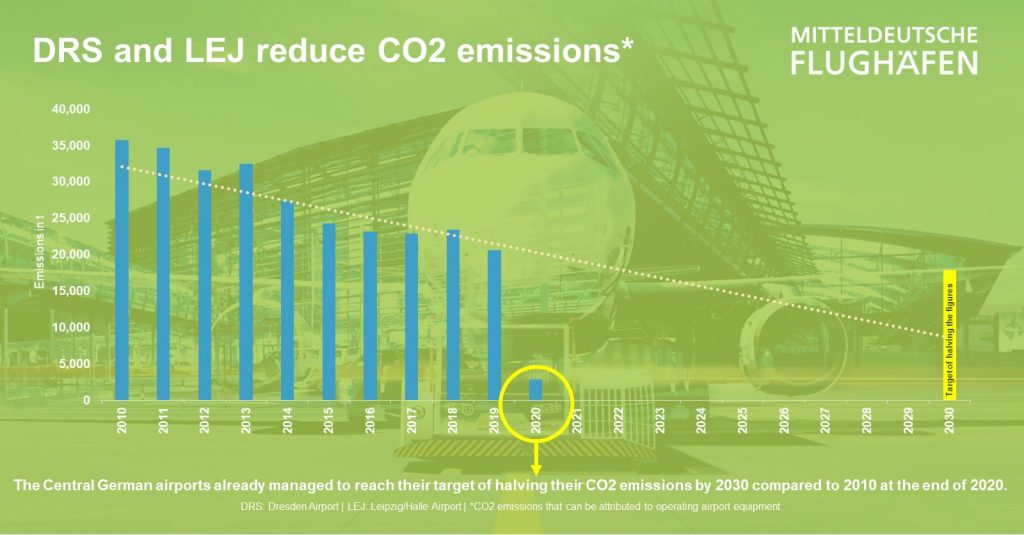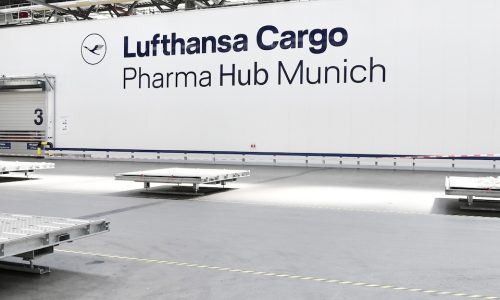Sector goal of halving the figure is exceeded ten years earlier than envisaged

The Central German airports reduced their CO2 emissions by 86% in 2020 compared to 2019. Calculations performed at the end of May confirmed this.
This means that the company has already exceeded the sector goal that was envisaged for 2030 at German commercial airports: i.e. to reduce emissions by more than 50 percent compared to 2010.
The lower CO2 emissions have become possible notwithstanding the development of the Covid-19 pandemic, because the airports were still open. The Central German airports purchase climate-neutral electricity and make use of energy-efficient LED technology. The fleet of vehicles is also being gradually switched to alternative drive systems and compensation is being obtained for the CO2 emissions from natural gas.
As a result, the Central German airports have significantly reduced the CO2 emissions caused by airport operations to a figure of 2,770 tonnes per annum. The company is therefore making its contribution to continuing to reduce international aviation’s share in global CO2 emissions of three percent.
Götz Ahmelmann, CEO of Mitteldeutsche Flughafen, said: “Protecting our climate is a major corporate goal for us. We’re pursuing an ambitious environmental strategy with a view to our neighbours and are continually working to operate our airports in a climate-neutral manner as early as possible. We want to encourage our customers to follow this course too.”
Airports have been monitoring CO2 emissions since 2012
Dresden and Leipzig/Halle Airports have been logging and monitoring the CO2 emissions that are due to operating the airport equipment – and can therefore be directly influenced – for ten years. This covers the CO2 emissions within the corporate group that result from operating the infrastructure and fleets of vehicles and equipment at the airports.
By modifying the lighting in the car parks, terminals and outside areas to energy-efficient LED technology and gradually switching the airports’ own vehicles and equipment to alternative drive systems, it was already possible to reduce the CO2 emissions by more than 35 percent between 2012 and 2019. The lighting on the northern runway at Leipzig/Halle Airport is also being switched to LED technology at the moment.
Using CO2-neutral types of energy
The Central German airports have been purchasing green electricity since 2020 and have therefore prevented approx. 6,800 tonnes of CO2 emissions. An equivalent of 8,000 tonnes of CO2 has been compensated for by acquiring certificates for the CO2 emissions from natural gas, which is particularly used when operating the combined heat and power station and in the building heating systems at Leipzig/Halle Airport.
The Central German airports are not alone in making great efforts to achieve greater climate protection. German commercial airports are pursuing a 4-point climate plan. Ongoing projects concern building technology, energy supplies, electricity consumption and the airports’ own vehicle fleets.
The German aviation industry has adopted a master plan for climate protection. This focuses on aircraft with lower emissions, replacing fossil aviation fuels, operating CO2-neutral airports, more efficient air traffic controls within European airspace, moving shipments on to rail services and pricing CO2 greenhouse gas emissions so that competition is not distorted.

